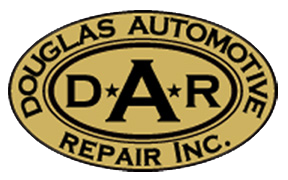How can I tell when my tires are worn so much that they need to be replaced?
That is an important question for car owners. As we talk about this, keep in mind that one of the vital jobs of your tire tread is to move water. The channels in the tread act as passages for water to escape from underneath the tire. The deeper the tread, the deeper the channel – and the more water that can be evacuated.
When enough water can’t be moved from underneath the tire, the tire can ride on the water – often called hydroplaning. The tire is literally not contacting the road but rather is “floating” on the water so there is little traction and the Car or SUV can slide.
So somewhere between a brand new tire and a bald tire lies the point at which the tire should be replaced. Some governmental jurisdictions have minimum tread depth requirements for motorists – others do not. So check the important laws where you to learn the legal minimum.
There are several popular ways to check your tire tread depth. One easy way is the penny test. Simply insert a penny into your tire’s tread groove with Lincoln’s head upside down and facing you. If you can see all of Lincoln’s head, your tread depth is less than 2/32 inch and it’s time to replace your tires.
Another easy coin test is the quarter test. Insert a quarter into your tread groove. If the tread touches Washington’s head, you have at least 4/32 inch of tread remaining.
Don’t have any change on you? No problem. Another way to check tread depth is to look at the treadwear indicator bar that’s molded into your tires. The bars are located at the bottom of the tread grooves in several locations around the tire. When these bars become visibly flush with the adjacent ribs the tire has no more than 2/32″ of tread remaining. This is a visible indication that the tire should be replaced.
Studies have shown, however, that there is an important difference in stopping distances for motorists in detrimental wet conditions with tires that have less wear. For example, in controlled, wet conditions a vehicle with 3.18 mm (4/32 of an inch) of tread traveling at expressway speeds was able to stop in about 26 metres (85 feet) less distance than the same car with tires with 1.6 mm (2/32 of an inch) of tread. That could easily be the difference between a safe stop and hitting the Car or SUV in front of you.
New tires are a big ticket item for auto owners so it’s natural to want to get as much value out of them as possible. Just remember that a huge part of that value is the ability to stop safely in wet conditions.
Douglas Automotive Repair can provide you with a competitive quote if you need your tires replaced. Give us a call today!
This entry was posted in Tires and tagged Tire Replacement, Tire Tread Depth on .



